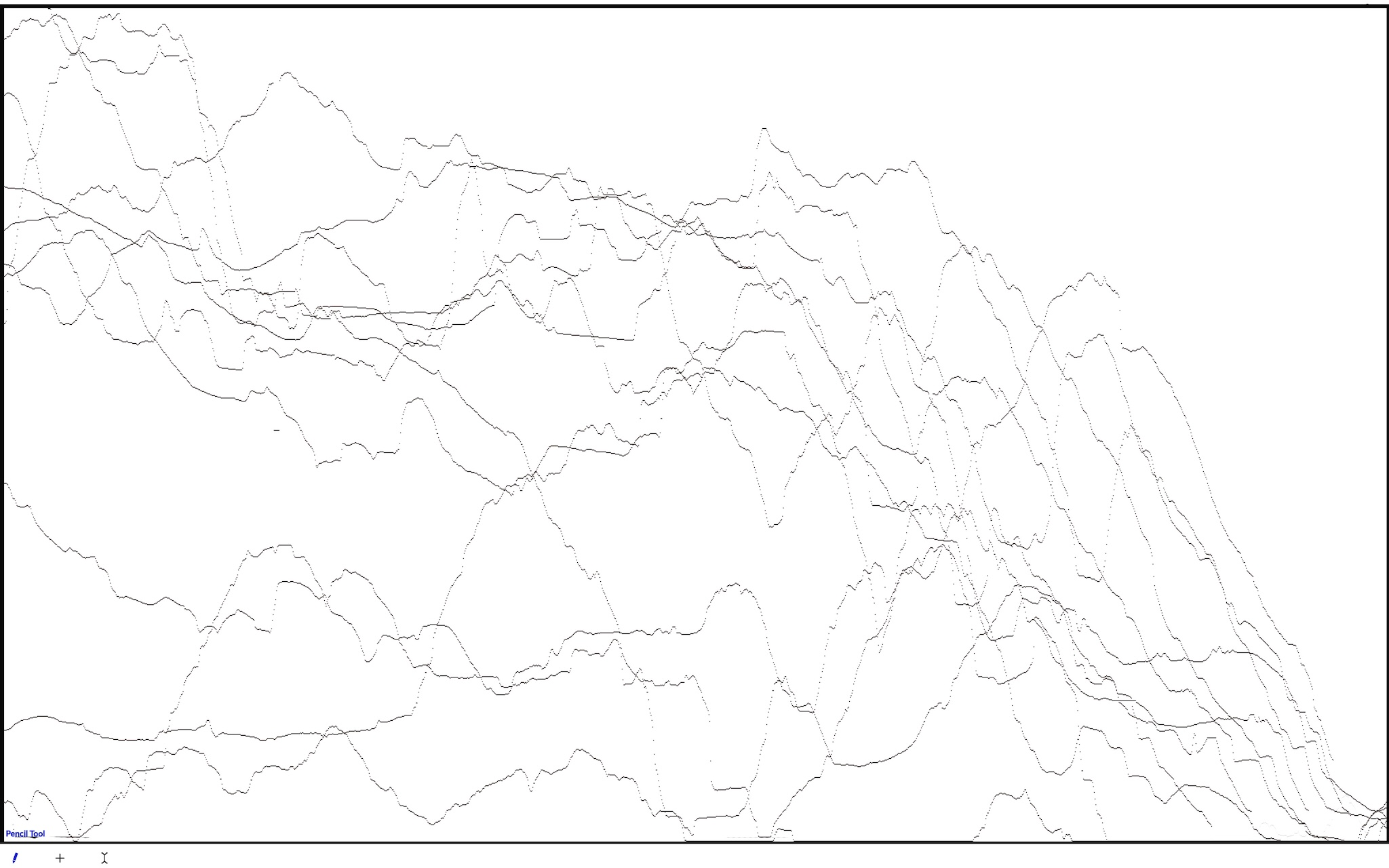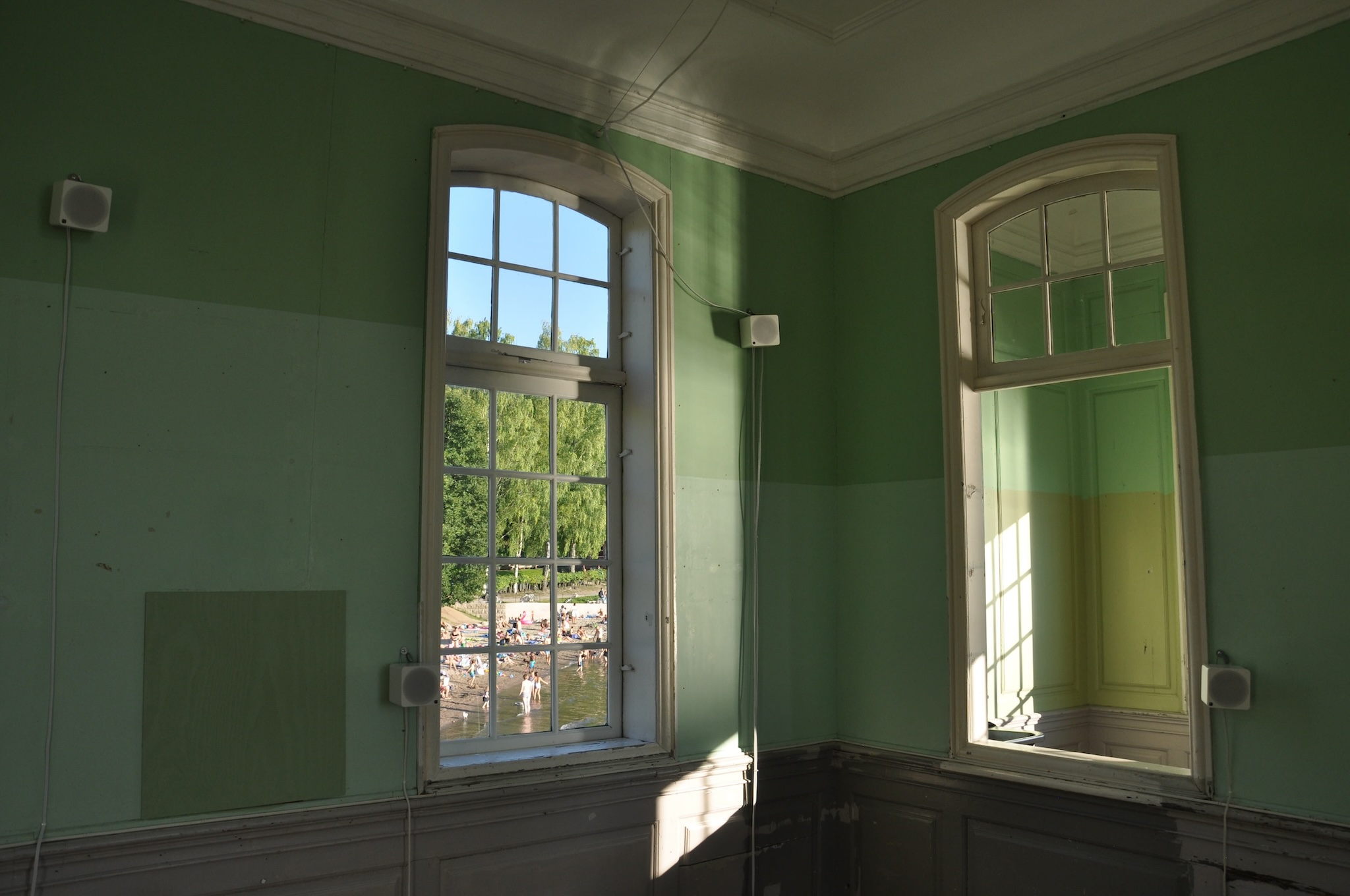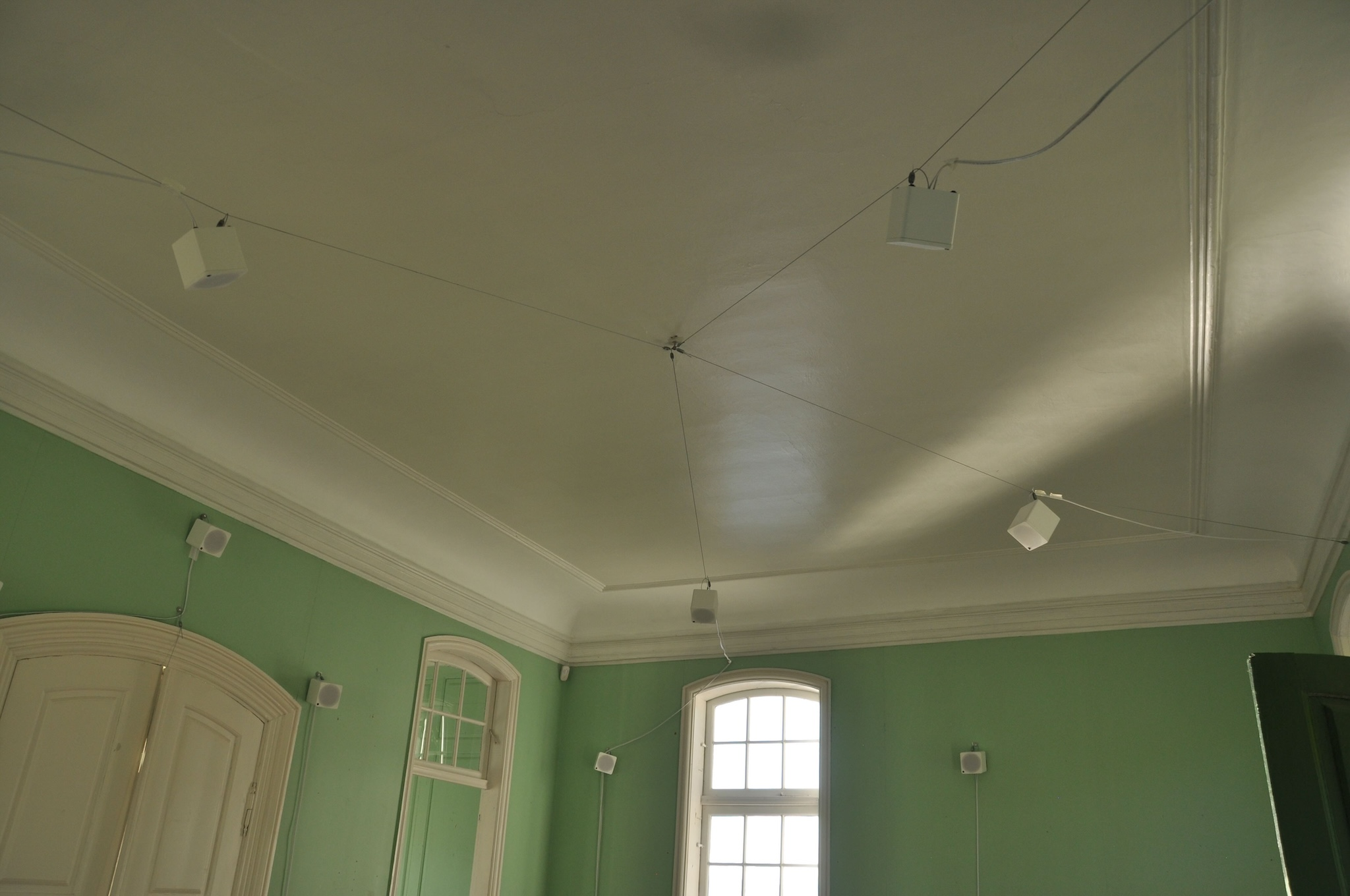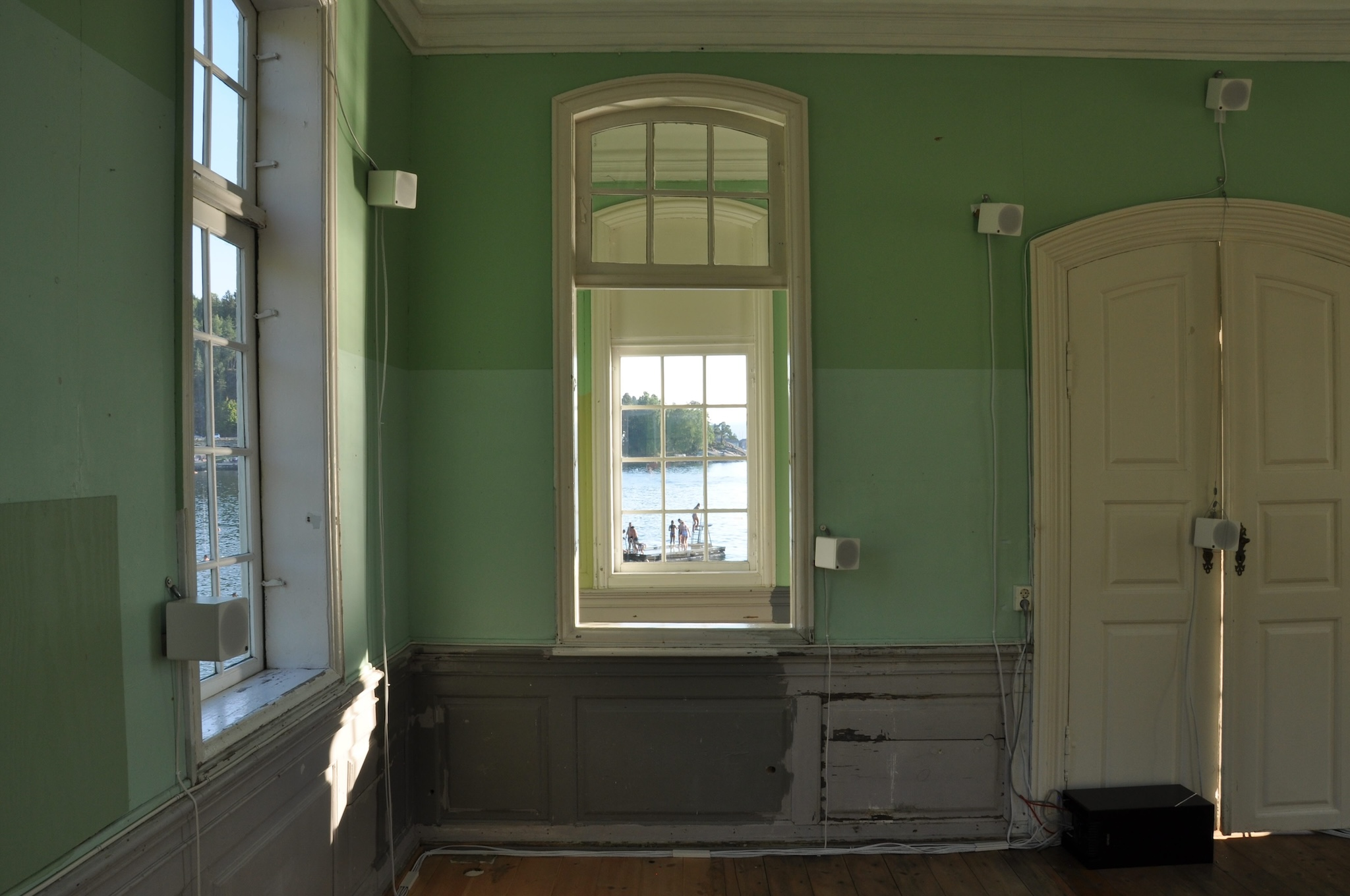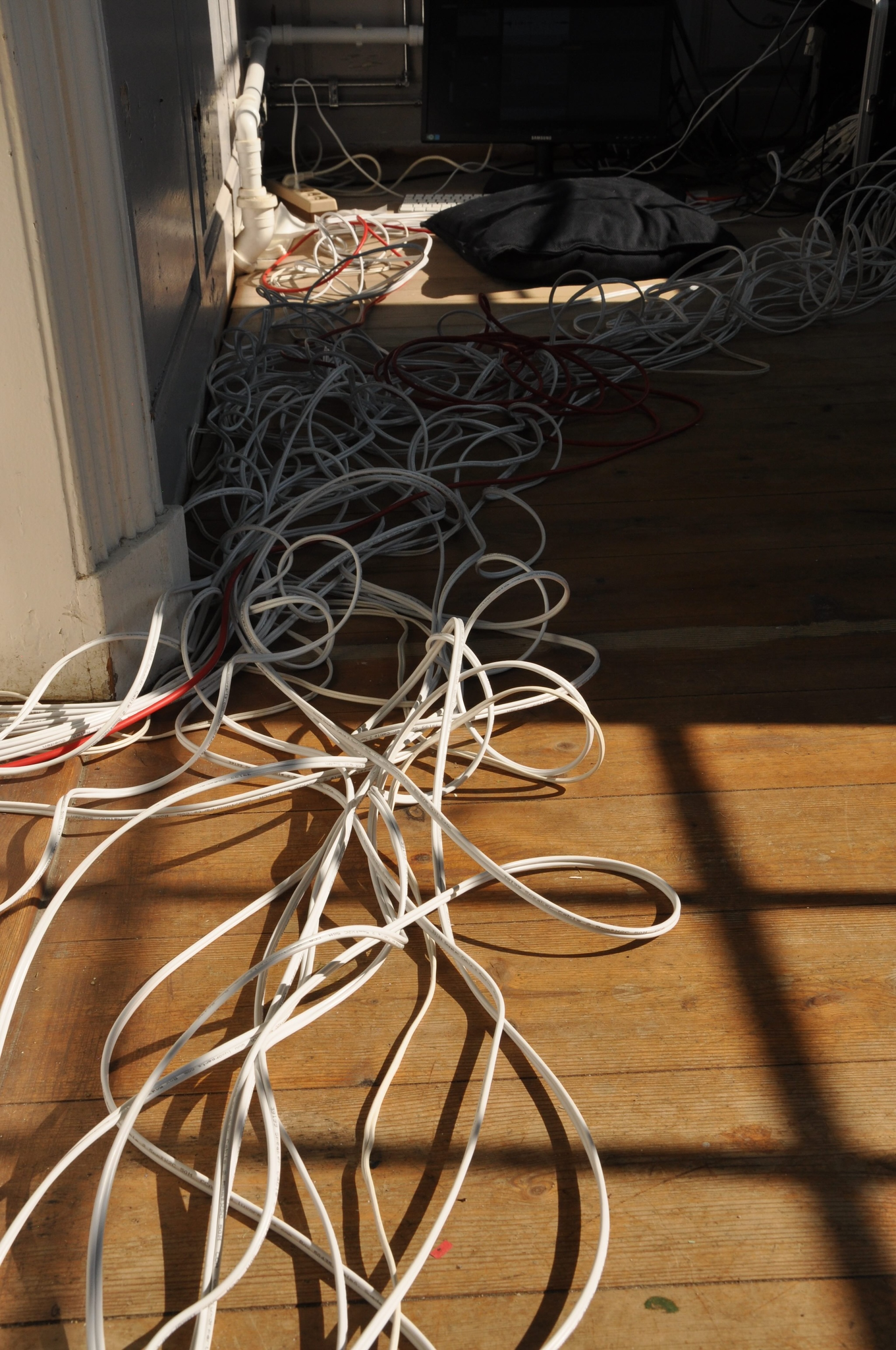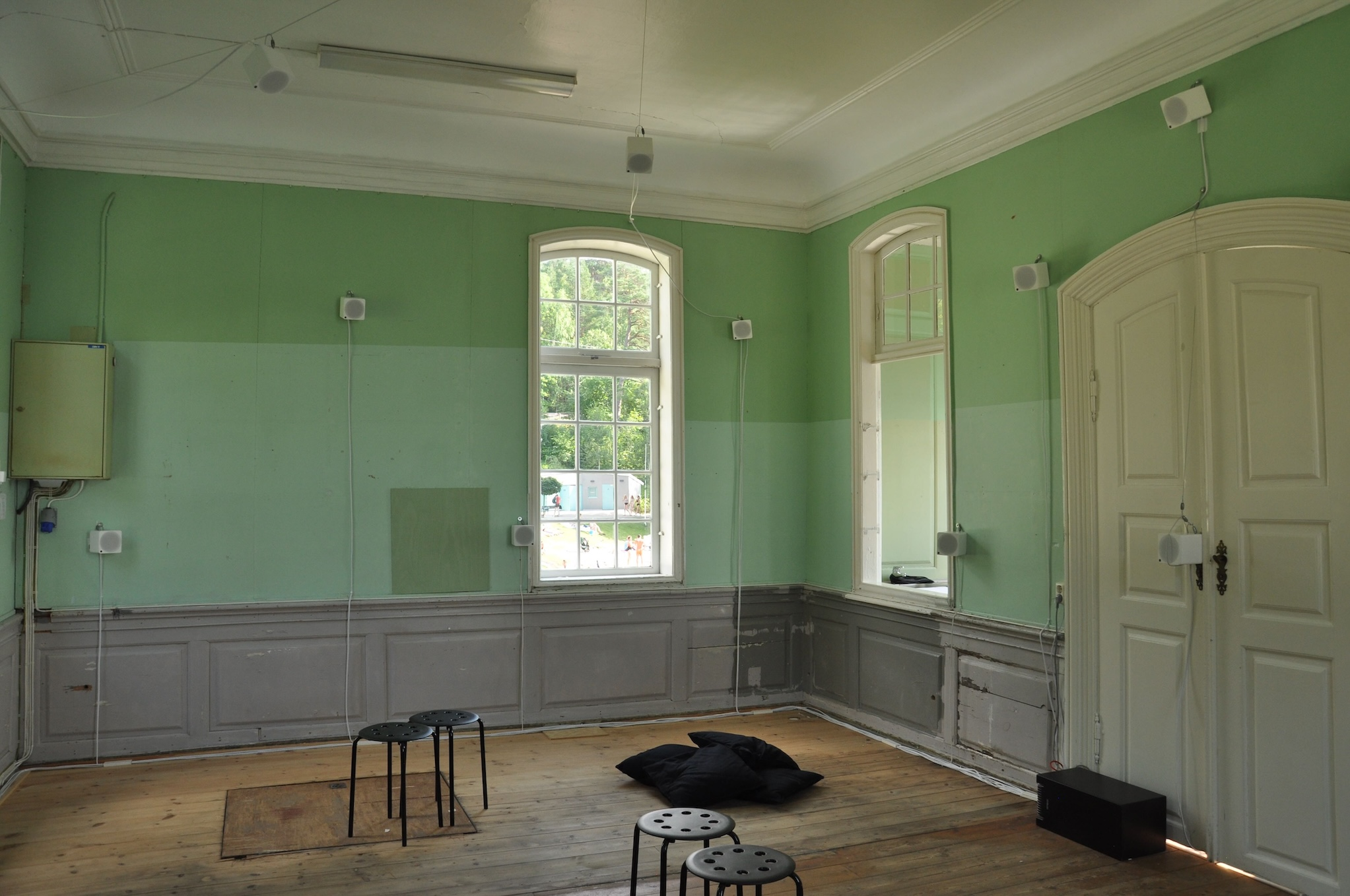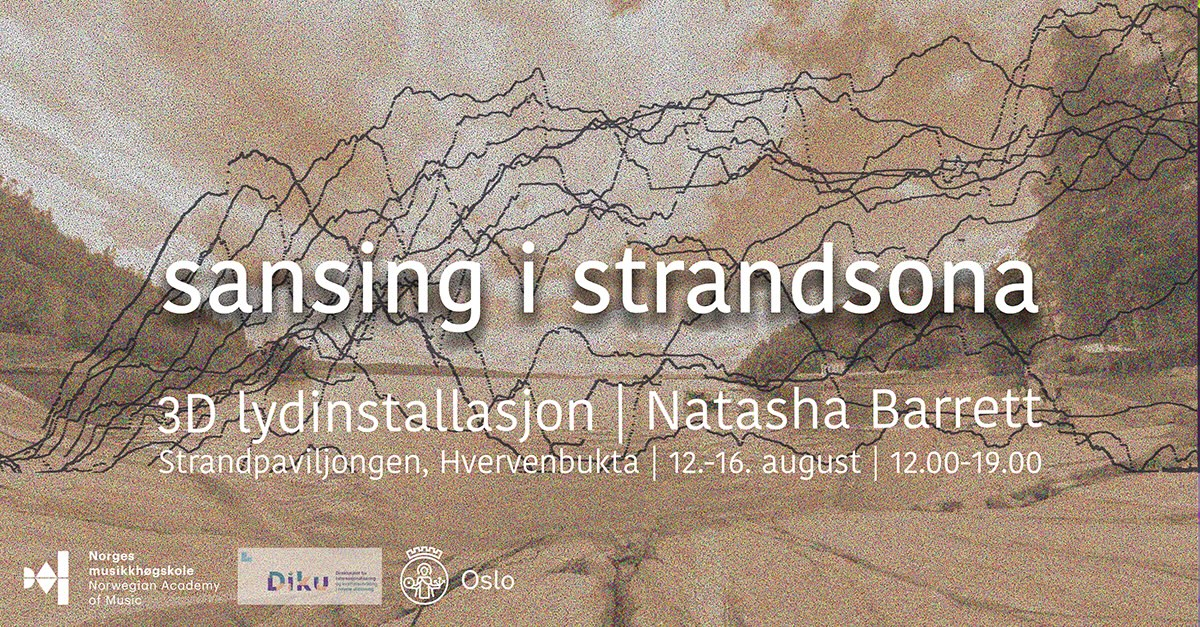“Sansing i Strandsona” was a 3-D sound installation sensing the environment of Hvervenbukta - a small bay on the east side of the inner Oslo Fjord. The work was installed inside a beach pavilion dating from 1765 and was played back over 24 small loudspeakers arranged in a 3D dome. “Sansing i Strandsona” played from the 10th to the 16th of August 2020. The work was approximately 20 minutes long and ran in a continuous loop.
This was the first public space sound installation that I created in the Reconfiguring the Landscape research project drawing on the seasonally changing content of the site's soundscape that could be heard throughout the year. For general information about how these works were created, please refer to the page “Public Space Outdoor Sound-Art Installations”.
Unlike the later installations, this work was installed inside a building. Although the installation was not strictly outdoors, the age of the building meant there was no sound isolation and the outside environment easily penetrated through the walls and windows, and blended with the sounds of the installation.
A second distinguishing feature of this installation is my exploration of the concept of landscape sonification, wherein sonification refers to the utilization of non-speech audio to communicate information or visualize data.
In the first research meeting of Reconfiguring project members, Elisabeth Sjödahl (research fellow at the Oslo School of Architecture and Design), described her work investigating the watershed of the Oslo region. This interesting work shows how land area channels rainfall and snowmelt to creeks, streams, and rivers, and eventually to outflow points such as reservoirs, bays, and the ocean.
Although Elisabeth's work was not integrated into the Reconfiguring project, it highlighted the feasibility of obtaining data describing the topography of Norway which is freely available from the Norwegian mapping service Kartverket.
My idea was to sonify the landscape surrounding the pavilion. To achieve this, I downloaded a topography map from Kartverket and positioned 10 markers in the landscape surrounding the pavilion. On the map below, the pavilion is indicated by a red pin at Stubljan, and if you look closely you can see 10 more red pins arranged in a semi-circle around the pavilion.
I then drew a line through the landscape from the pavilion up to each of these 10 markers. These lines produced 10 topography cross sections of the landscape with a height accuracy of 1 metre; in other words I obtained 10, 2D height maps where each increment in height is geotagged with its actual map location. The images below show one of these height maps and all 10 height maps superimposed into 2D.
The next stage was to investigate a method of sonfiying this data. To do this, I created a max patch that calculated the gradient of the elevation at any particular point in space.
Imagine walking towards the pavilion along one of these 10 lines. You would likely notice that walking uphill is slower and more strenuous, whereas walking downhill is easier and faster. Considering this, my Max patch transformed the sound experience—when walking uphill, time passed more slowly, and when walking downhill, time passed more quickly. In addition, the sonification input sounds were transposed with a pitch height that correlated to the height of the landscape where sea-level was used as the reference.
I then needed to decide on the input sounds for the sonification and chose acoustic sources recorded from the area of the pavilion, such as seagulls, as well as abstract sine tones.
This first step in sonification created 10 mono sound files. Each of the sound files were then spatialised with respect to their relative position to the pavilion, resulting in the impression that the landscape was falling in towards the pavilion.
The result can be heard in the first minutes of the composition. A stereo mix is released on the Reconfiguring the Landscape CD.
While this was an interesting avenue of work, I decided not to pursue it further in the context of the Reconfiguring project. Having previously worked extensively with the sonification of scientific data for both musical purposes and for scientific auditory display (refer to Barrett 2016 and 2018 for additional reading), I realised that this work should be removed from the project so as not to divert the focus. Instead I continued to explore the sonification of data from Kartvertet in my other compositional activities.
Being installed in the middle of the COVID epidemic meant that advertising the installation as a public event was not possible, aside from informal promotion through my own social media network. Visitors familiar with my work made special trips, some traveling from Oslo, and many stayed inside the pavilion for over two loops of the work. However, August featured particularly good weather, attracting a large number of the general public to the beach and sea. Numerous individuals entered casually and listened for shorter periods.
The installation was supported by Oslo Kommune Cultural Affairs.
In September, “Sansing i Strandsona” was requested for the Il Suono in Mostra sound-art festival in Udine, Italy. I made an 8-channel remix for the Galleria Tina Modotti.
“Sansing i Strandsona” was also awarded the 2021 Coastal Futures International Ecoacoustic Music prize (USA).
References:
• Barrett, N. 2016. Interactive Spatial Sonification of Multidimensional Data for Composition and Auditory Display. Computer Music Journal 40(2):47-69
• Barrett, N. and Crispino, M., 2018. The Impact of 3-D Sound Spatialisation on Listeners' Understanding of Human Agency in Acousmatic Music. Journal of New Music Research, pp.1-17.



